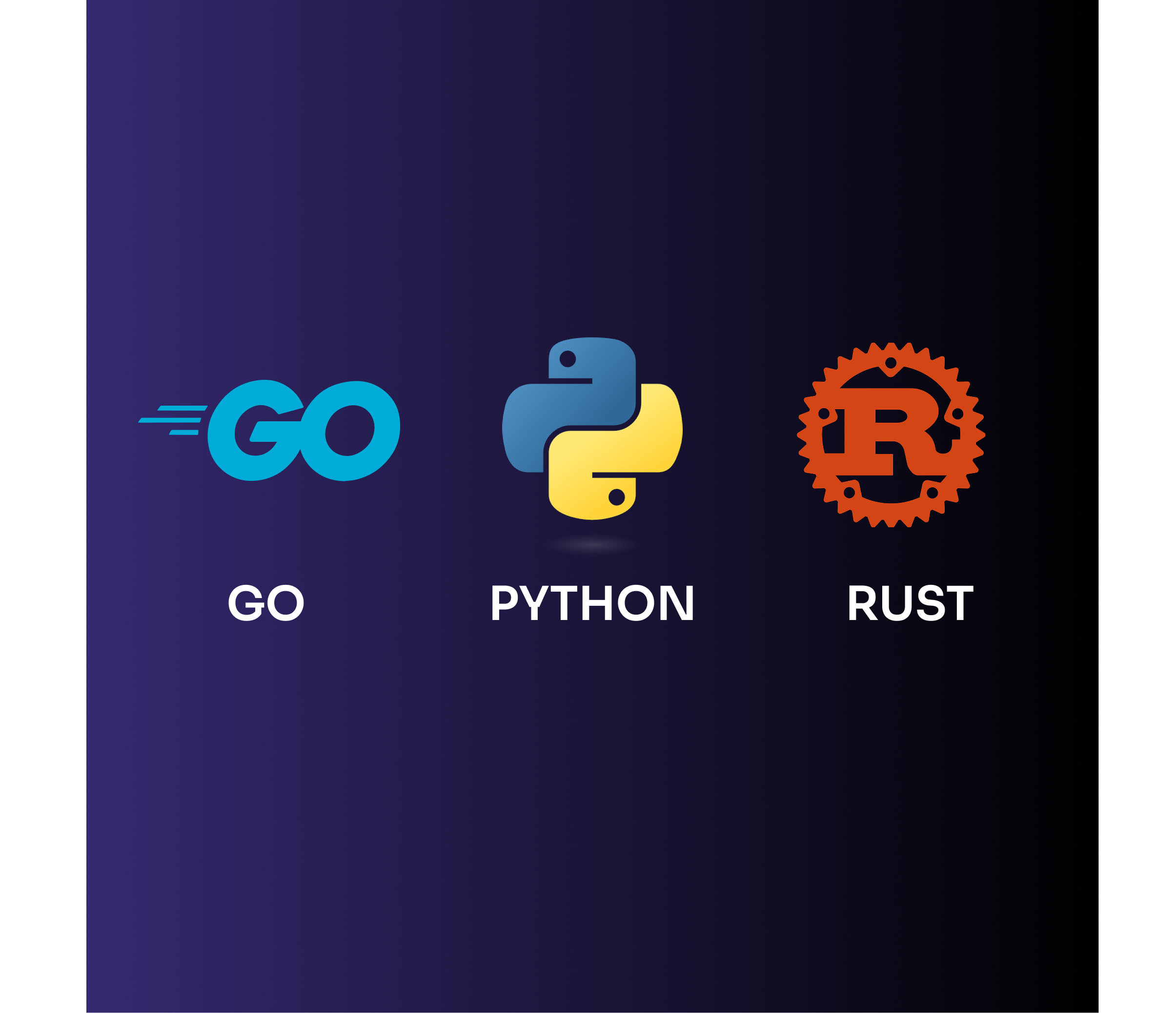
Go vs Python vs Rust: Which One Should You Learn in 2025? Benchmarks, Jobs & Trade‑offs
Compare Go, Python, and Rust performance in 2025 with real benchmarks, memory analysis, salary data, and practical guidance for choosing the right language for your next project.

Choosing a programming language in 2025 is no longer just about syntax or preference; it’s about performance, scalability, developer speed, and even your team’s cloud bill.
You’re building a high-throughput service. Should you pick Go for concurrency? Python for rapid iteration? Or Rust for raw speed and safety?
Benchmarks tell part of the story, but real-world trade-offs go deeper. In this post, we’ll compare Go, Python, and Rust across:
✅ Execution speed
✅ Memory usage
✅ Developer productivity
✅ Ecosystem and tooling
✅ Salary trends & job demand
And we’ll wrap with when to use each and why smart teams mix them.
⚡ Raw Performance: Who’s Fastest in 2025?
When it comes to raw compute, Rust is still the speed champion.
For a simple Fibonacci benchmark (AMD EPYC):
Rust: ~22 ms
Go: ~39 ms
Python: ~1 330 ms (Markaicode)
From BenchCraft, Rust consistently runs 2× faster than Go and ~60× faster than Python for CPU-heavy tasks like JSON parsing or binary tree traversal.
💡 So, if you need maximum throughput for compute-bound workloads, Rust wins.
For I/O-heavy services (e.g., web APIs, DB queries), Go holds its ground well and often feels “fast enough” while being simpler to maintain.
Python? It’s slower, but…
👉 It shines when runtime performance isn’t the bottleneck like prototyping or gluing together existing ML libraries.
🧠 Memory Efficiency
Here’s how they handle memory:
Rust → Minimal footprint thanks to ownership and zero-cost abstractions (you get high-level features like iterators or traits without any extra runtime cost compared to low-level code).
Go → Uses garbage collection but keeps pause times low (<10 ms in most real workloads).
Python → Has a larger memory overhead (hundreds of MB for data-heavy scripts), though tools like Cython, Codon, or PyPy can cut usage significantly (Arxiv).
Rust is ideal for edge devices, embedded systems, and performance-critical microservices.
Go balances memory efficiency with developer simplicity.
Python is fine for small-to-medium workloads, but scaling it often means scaling your infrastructure too.
⏱ Developer Speed vs Runtime Speed
Let’s talk about time-to-ship vs time-to-run.
| Language | Pros | Cons |
|---|---|---|
| Python | Fastest iteration, massive ecosystem (AI/ML, automation) | Slower runtime, dynamic bugs |
| Go | Clean syntax, built-in concurrency, easy onboarding | Manual error handling, simpler type system |
| Rust | Compiler safety, prevents runtime bugs, extreme reliability | Steep learning curve, slower initial development |
👉 Rust makes you go slower upfront but saves you from runtime crashes.
👉 Python lets you move fast, but you may pay later in performance or cloud costs.
👉 Go is the middle ground; fast to write, fast enough to run.
🔧 Ecosystem & Tooling in 2025
Python → Still dominates AI/ML (PyTorch, TensorFlow) and remains the top GitHub language (~30% share) (Codezup).
Go → The go-to for cloud-native tooling (Kubernetes, Docker). Version 1.22 brings better generics and optimized garbage collection (Evrone).
Rust → Strong in blockchain, WASM, and systems programming, with stable async traits and robust web frameworks like Actix and Axum (LinkedIn Tech Post).
So if you’re:
- Doing AI/ML? Python.
- Building microservices & DevOps tools? Go.
- Creating high-performance web services or low-level apps? Rust.
💰 Salary & Job Market (2025)
Here’s what the 2025 market looks like:
Rust → $150K–$210K (DevOpsSchool)
Go → $140K–$200K (DevOpsSchool)
Python → $130K–$180K (DevOpsSchool)
📈 Demand trends:
- Python: +40% job growth in AI & automation (TechGig)
- Go: high demand for cloud-native & microservices roles
- Rust: niche but premium-paying for systems, security, and crypto
💡 If you’re career-driven, Python opens the most doors. Rust gets the highest paychecks (if you find the right niche). Go is safe and in steady demand.
💡 Hidden Costs & Trade-offs
Every choice has hidden costs:
Rust: Slower onboarding for teams but fewer bugs and outages long-term.
Go: Easier to hire and onboard but less control over fine-grained performance.
Python: Cheapest to prototype but expensive at scale (higher cloud compute bills from slower runtime).
And for your team’s career flexibility:
- Python = broad skillset (AI, web, scripting)
- Go = cloud/devops career track
- Rust = niche, high-value systems work
✅ When Should You Pick Each?
Pick Python if: You’re doing AI/ML, data pipelines, automation, or quick prototypes.
Pick Go if: You’re building cloud microservices, APIs, DevOps tooling, or serverless backends.
Pick Rust if: You need maximum performance, safety, or memory control, think embedded systems, blockchain, or performance-critical services.
💡 Hybrid stacks are common in 2025 e.g. Python for orchestration + Rust for hot paths, or Go APIs + Rust compute modules.
🛠 Tools & Best Practices
Benchmarking → hyperfine, wrk, locust
Profiling → Rust: Clippy + cargo-profiler • Go: pprof • Python: cProfile
Best of both worlds? → Benchmark, find bottlenecks, and selectively replace slow parts with Rust.
TL;DR
Rust → Ultimate speed & safety.
Go → Cloud-friendly and developer-efficient.
Python → Flexible, AI/ML powerhouse, but slower.
In 2025, smart teams mix & match—choosing based on task, not trend. The real question isn’t which is the fastest? But which helps you deliver value the fastest without sacrificing the future?
Your Turn 🚀
What’s your go-to stack in 2025 and why?
Do you run hybrid architectures? Have different benchmark results? Share them in the comments. I’d love to hear your take!


